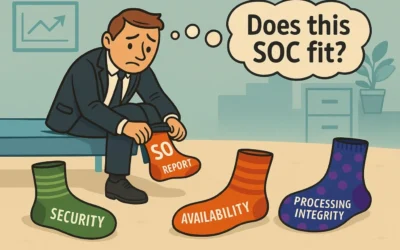When US based companies are expanding and setting up offices in foreign countries, or they’re already established but need to do a systems upgrade, there are two primary options available. The company might look to procure equipment locally in-country. Or they might approach their US supplier and then plan to export the equipment.
At first it may appear to be a simple matter of efficiency and cost. How to get the equipment on the ground at the best price and as quickly as possible. But both options are mired in complexity with hidden costs and risks that aren’t immediately obvious. It’s when companies make assumptions that they run into trouble. Even a small mistake can be very costly, impacting the business reputation and bottom line.
Being aware of common pitfalls when looking to deploy IT systems internationally, can help decision makers reduce risk and go about deployment in a way that benefits the company in both the short and long term. To highlight what factors need to be taken into consideration, we discuss some common assumptions and oversights that can land companies in trouble.
Total cost of local procurement
Initially when getting a quote from a local reseller, it may appear to be more cost effective compared to international shipping and customs clearance. However, it’s important to know if the purchase is subject to local direct or indirect taxes and if they have been included in the quote. For example: In some European countries VAT (Value Added Tax) is charged at 21% on all purchases. If this is not included and specified on the quote, companies could inadvertently find themselves paying 21% more than budgeted.
Maintenance and asset management
IT systems may require procurement from multiple local vendors and this can be a challenge when it comes to managing warranties, maintenance contracts and the assets. Even if the vendors are able to provide a maintenance service, the responsibility still rests with the company to ensure the assets are accurately tagged and added to the database. When breakdowns occur or equipment needs to be replaced, the company will need to have the information on hand to know how to go about that, and if they don’t, it can be problematic. With a central point of procurement, asset management can be much easier.
Unknown and unforeseen factors
Operationally, dealing with suppliers and vendors in a foreign destination can be challenging. Without local knowledge and understanding of local cultures and how business operates within that culture, it’s easy to make mistakes. And those mistakes can be costly. For example: local vendors may have to bring in stock and this could result in delays. It may be difficult to hold the vendor to account, especially if they keep promising delivery, yet delays persist. Companies could be stuck in limbo, waiting for equipment. Installation teams are delayed and operational teams become frustrated. These types of delays can end up costing the company significantly more than what was originally budgeted for the deployment.
Export/import regulations
Some companies may decide to stick with who they know and buy from their usual US supplier with the view to ship the equipment to the destination using a courier or freight forwarder. The challenge comes in understanding international import and export regulations. Too often companies will simply tick the boxes that enable the goods to be shipped, even if it isn’t entirely accurate. There are many ways to ship goods that might get them to a destination, but only one correct way that ensures the shipment is compliant. Knowing and understanding import regulations, taxes and duties, including how they differ between countries is the only way to reduce risk and avoid penalties.
Multiple risks and impacts
Even within regions, countries have different trade and tax regulations regarding how imports are categorized and processed through customs. On major IT deployments with many different equipment components this can become highly complex. The logistics of managing everything is equally complex and any mistakes have knock on effects. Keep in mind that the company usually has to work with what is deployed for a number of years. This makes the cost of getting a deployment wrong a major risk. If there’s non-compliance with trade and tax regulations it can result in stiff penalties that can set a company back financially. If logistics and installation go awry it can result in company downtime which has operational implications.
Understanding the risks and challenges, what’s the solution?
There’s value in having centralized management of international IT deployment. Especially when that centralized management incorporates overseeing trade and taxation compliance, procurement and asset management, as well as logistics and delivery. If at any stage of the deployment there are queries or concerns, there’s a central contact to hold accountable and get answers.
Initially the costs of managing deployment centrally may appear to be higher, but the value comes in with removing risk of non-compliance and reducing risk of delays and operational downtime. Plus having an up to date asset database makes it significantly easier to manage maintenance, warranties and breakdowns going forward.
Companies debating which deployment route is most efficient, need to consider the possible pitfalls and their abilities to manage them independently. If there’s any doubt, then a centrally managed solution should be a serious consideration.
To hear a more detailed discussion on these and other common deployment pitfalls listen to our recent podcast on IT Trendsetters. The podcast contains some valuable and enlightening discussion points that you may find helpful.


